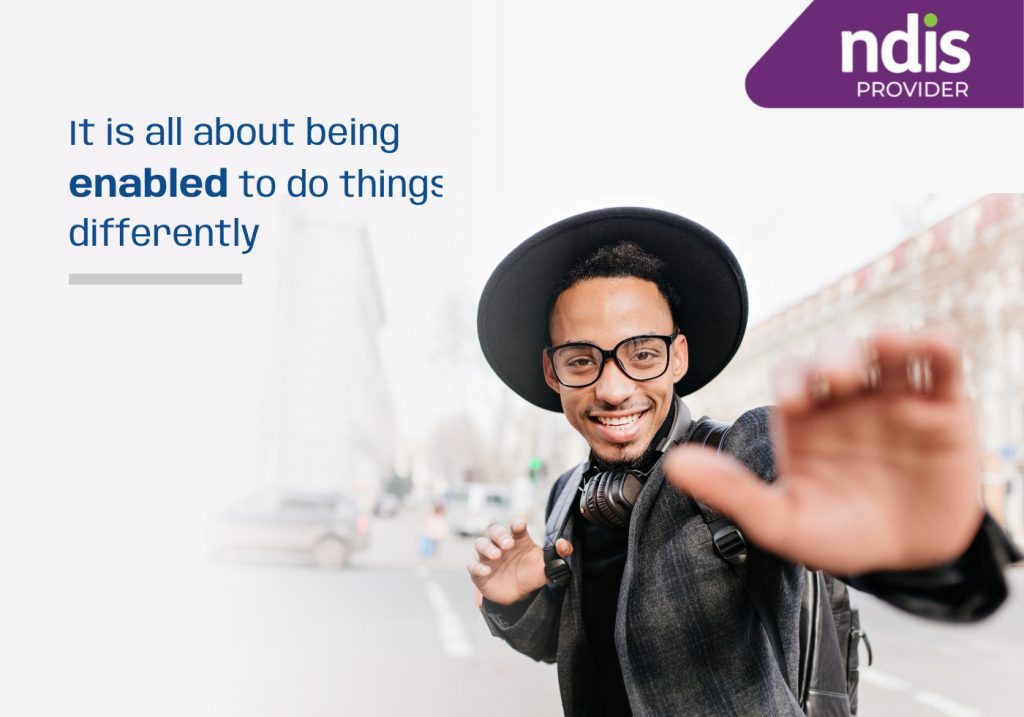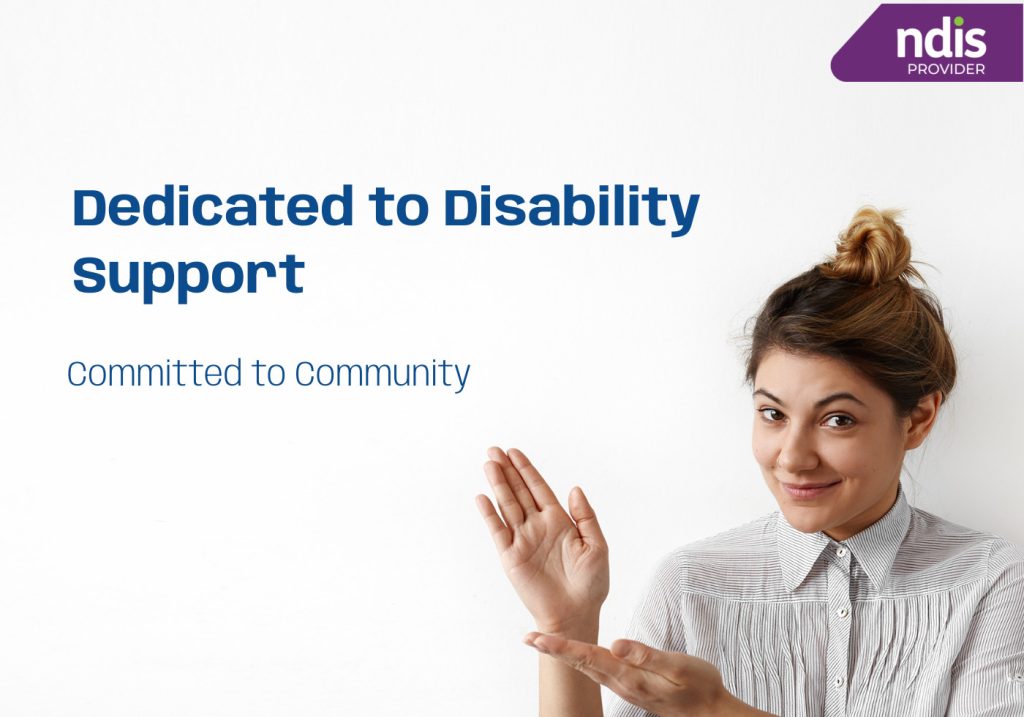Inclusive and Accessible Social Media Strategy for NDIS Providers
When it comes to creating social media content for disability providers, ensuring that your posts are accessible is crucial. Social Media Strategy for NDIS Providers can also have broader business benefits.
If you’re an NDIS provider, ensuring that your social media content is accessible to all is essential to building an inclusive community. Learn how to incorporate accessibility into your strategy with this guide.
Understanding Accessibility Guidelines for Social
Social media is an important tool for government agencies to use in order to engage with citizens, deliver services and share information. However, as the social world becomes more diverse, it’s crucial to ensure that your agency’s digital services are accessible to all of your audience – including people with disabilities.

A great way to begin implementing an inclusive and accessible social media strategy is by understanding the accessibility guidelines for social content. This will help you to avoid compromising the experiences of people with disabilities while providing your audience with the most engaging, relevant content possible.
1. Always add alternative text to images, which are used by screen readers and search engines to provide information about the image. This is especially important when the image has a background that makes it difficult for screen reader users to read or understand.
2. Always include captions for video content, which are a good way to ensure that everyone can see your videos. Captions are particularly helpful for longer videos that feature dialogue, complex narratives or other activities that might be hard to explain in text alone.
Adding Alternative Text to Images
Alternative text (or alt text) is a short description of an image that helps make sense of it when the image fails to display or when users with disabilities can’t use a screen reader. It can also help search engines understand what your images are about and why they’re important.

It’s important to give alt text enough detail to accurately describe the image, but not so much that it’s difficult for a screen reader or other assistive technology to read all of it. A good tip is to think of how you would describe an image in a conversation, and try to write the alt text that way.
If you use hashtags on your social media posts, it’s important to remember to capitalize the first letter of each word in the hashtag. This improves readability for people with dyslexia, low vision and people who use screen readers.
Providing Closed Captions for Video Content
Video is an important content format for social media, but it can be difficult to convey information to people who are deaf or hard of hearing. Captions, which are time-synchronized text that mirrors audio tracks in a video, can help.
The most effective way to provide closed captions is by creating an SRT file. This file can be uploaded alongside your video on many social media platforms such as Facebook, LinkedIn, Twitter and YouTube.
A good quality closed caption should contain all words spoken by characters (including stuttering) and describe sound events that impact on the story. For example, if a video shows a performance where audience applause is important, the captions should include this in a format that preserves the natural flow of the audio.
Social Media Strategy for NDIS Providers should also emphasis that the captions should also include ambient sounds such as music playing or laughter in the video. This is essential for people who are blind or have low vision.
Using Accessible Hashtags and Emojis as part of your Social Media Strategy for NDIS Providers
Hashtags are a quick and easy way to categorize content on social media for disability providers. They’re also an effective tool for attracting new followers and engaging with existing ones.
But it’s important to know that not all hashtags are created equal. Some are hard to decipher and make your message unclear.

For this reason, it’s important to write your hashtags in Camel Case, which means the first letter of each word should be capitalized (not all lowercase). This makes them easier for screen readers to understand and relay to users accurately.
This also works with emojis to ensure that your messages are understood by users of all abilities. However, you should be careful not to overload your posts with emojis.
Using too many emojis can lead to text being unintelligible for people with disabilities who use assistive technology. It can also clutter up your pages on high zoom, and cause issues with page alignment for screen reader users.
If you aren’t sure how to incorporate inclusive hashtags and emojis into your social media strategy, consult your Unit Social Media Lead or University Communications. They will be able to help you create a strategy that works for your organization.
Centering the Experiences of People with Disability
The NDIS aims to deliver flexibility, choice and control in care for people with disability. However, there are concerns about the way that this system can widen inequality and exacerbate existing patterns of discrimination and disadvantage.
There is a need for research that explores the experience of women with disability accessing these systems. This has been noted by a recent evaluation of the NDIS, which found that women were more likely to experience unmet support and to report difficulty navigating the NDIS.
Despite the importance of this issue, there has been limited quality research about this topic. This scoping review will map the existing literature on this topic and identify gaps in knowledge to inform future research.
This mixed methods, inductive phenomenological study will elicit the lived experience voice of participants with a NDIS plan and carers using semistructured one-to-one interviews and a clinical and administrative review of documents and communications. In addition, focus groups with NDIS support workers and support coordinators will provide a phenomenological understanding of this population group.
Celebrating Diversity and Representation
Diversity and representation are important on social media because they help to create a more inclusive space for people to communicate. Taking the time to celebrate different cultures and backgrounds helps people feel included. The right social media strategy for NDIS Providers makes it more likely that they will follow your brand.
In addition to the impact that it has on people, diversity is also good for business. Companies with more diverse management teams are more productive, and they have better financial returns.
While it may seem like celebrating diversity is a simple task, it can be challenging. There are many things that can go wrong. One of the biggest problems is generalization and stereotyping.
These issues are often exacerbated when celebrating a particular group for a single month. For example, Black History Month only celebrates the famous Black people and doesn’t highlight all of the great things that Black people have done.
To avoid this problem, it’s important to celebrate diversity on a regular basis. This can be through a hashtag campaign, creating content that highlights different people’s experiences, and inviting other people to share their own stories.
Measuring the Impact of Social Media Strategy for NDIS Providers
The NDIS is one of the most ambitious personalised funding schemes in the world. Its potential to inadvertently widen existing inequities should be monitored as it moves through implementation, and adjustments made if necessary.
This ‘personalisation’ approach is seen by some governments as a panacea for social policy challenges – it offers choice and control, provides incentives for providers to provide both high quality and efficient services and is likely to be more equitable than other alternatives. However, this approach can also inadvertently widen inequities and inequalities if not careful consideration is given at the policy design and implementation stages.
Incorporating Feedback from the Disability Community & Providers
The disability community and disability providers can provide valuable feedback to your social media strategy. They can provide you with insight on how your content is being received and whether or not it is triggering for people who may be suffering from mental health issues or post-traumatic stress disorder.
Incorporating this feedback into your social media strategy can help you create posts that are easier to read by those with disabilities and thereby encourage people to participate in your community. In addition, it can also be useful to consider how your content may be viewed in different languages.
This can be done by including a short, simple language version of your post or by simply making sure that all of your social media content is accessible to all users. By doing this, you can reduce the burden on people with disabilities who are already struggling to make their way through their daily lives.
Incorporating a range of strategies to include people with disabilities in your social media strategy will help you reach the most people possible. For example, you can employ people with disability to co-design targeted engagement strategies and establish multiple, accessible means to listen to and capture their ideas.

